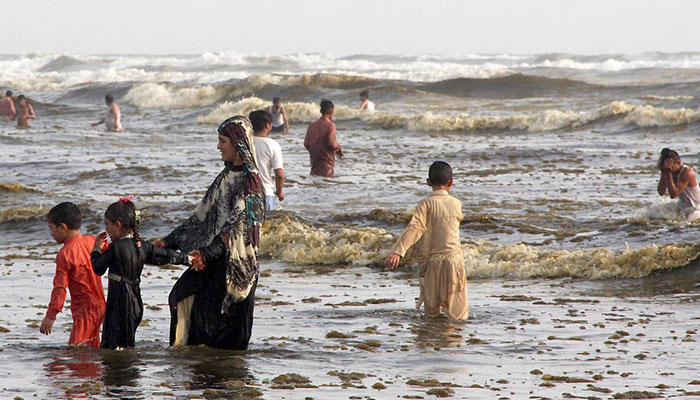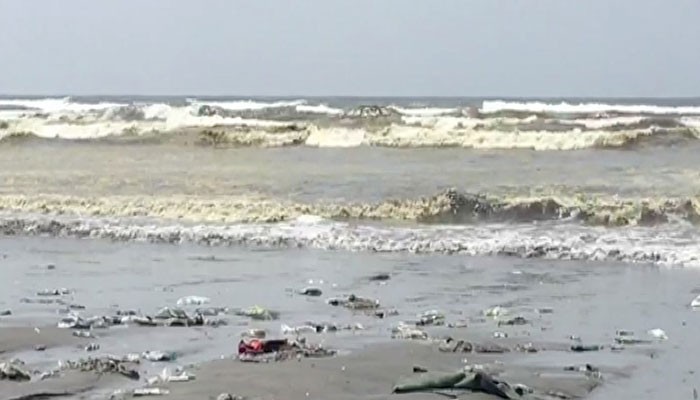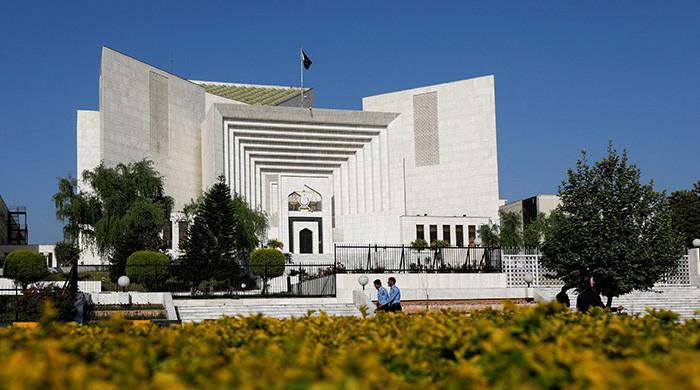'Oil slick' on Karachi beach: Here's what the experts say
Fear and panic spread among residents living on the beachfront who were the first to witness the oily sludge
September 09, 2017
Celebrations turned ‘sticky’ on the third day of Eid when more than a four-kilometre stretch of Clifton Beach was covered by an ‘oil slick.’
It wasn’t long before fear and panic spread among residents living on the beachfront, who were the first to witness the oily sludge. Adding to the panic was expert disagreement on the substance that caused the contamination.
According to WWF Pakistan, the substance bears the characteristics of oil which is “shiny and sticky”. On the other hand, National Institute of Oceanography (NIO) experts maintain their reservations over this conclusion. In fact, they have questioned whether the substance is actually oil, at all.
“When we visited the site, our very first observation was that this was not an oil spill,” Dr Samina Kidwai from the Department of Biological Oceanography at NIO explained to Geo.tv.
“The colour of the water gives the impression that it is oil, but on closer inspection we determined that the colour was the only similarity to make it appear as an oil spill. Whenever there is oil, there is a shine at the surface and stickiness in the water, which is missing in this case.”
The sight reminds us of the MV Tasman Spirit, which spilled over 33,000 tons of oil over a 16-kilometre stretch of Karachi's coastline.
The medical complications that followed for nearby residents from severe nausea, headaches, and throat infections forced them to evacuate their homes and move further inland.
Upon observing samples of water under a microscopic lens, NIO’s initial deduction was reaffirmed.
“People were comfortably swimming here and our colleagues who went to take water samples had no oil stains on their dresses and the substance has no smell.”

Further supporting NIO’s claim, Dr Kidwai said, “The substance was found within a three kilometre area and could be seen till off shore, had it (substance) been oil there would have been [an] oil line on the high watermark. Also, an oil spill cannot occur in such a limited area.”
An oil-line on the beach would be formed as the water would deposit it by pushing it on shore.
NIO’s Dr Nuzhat Khan suggested an alternate theory. “The best possible explanation of the substance’s presence is that it is a chemical put by the local administration of the area to unblock the choked storm water drains.”
However, Muhammad Moazzam Khan, who is a technical adviser for WWF-Pakistan, is not convinced.
“This is nothing less than a ‘small oil spill,’ he said firmly, adding, “If I go by this (NIO’s) logic, then it would require as many as 1,000 tankers carrying the contaminated water to change the properties of sea water.”
According to Khan, all that remains to be seen is whether this spill was an accident or done deliberately.
Confirmation for either theory will now have to wait until NIO’s tests are complete and reports made public.













